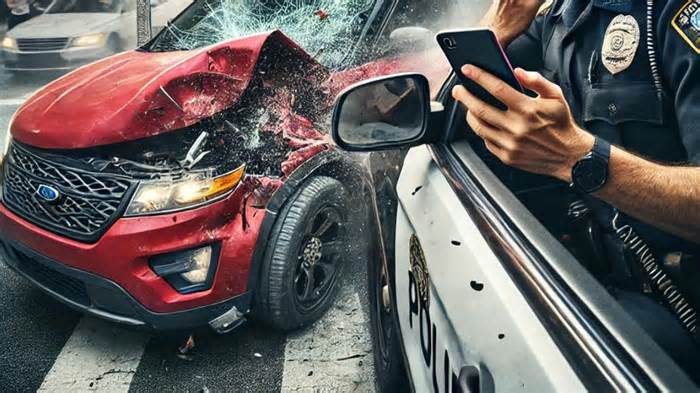Even those tasked with enforcing smartphone distracted driving laws can succumb to the temptation of distracted driving. A Lake County deputy in Florida resigned after an internal investigation revealed he crashed his patrol car while watching pornography on his phone. Initially, he claimed his brakes locked up, causing the crash. However, body camera footage contradicted his account, showing him steering with one hand while holding a phone displaying explicit content with the other. When questioned, the deputy eventually admitted to watching pornography at the time of the accident. Facing likely termination, he resigned, Vice reports.
Although the officer eventually admitted to his actions, virtual forensic experts may have found evidence of the officer’s distraction, even though there was no video evidence. Using modern mobile phone forensic technology, experts can obtain information that reveals detailed smartphone use in the moments leading up to an accident.
Modern smartphones record app activity, which can provide valuable insights into distracted driving incidents. A forensic analyst can determine whether social media, messaging apps, or navigation equipment were active in the moments leading up to and just before an accident. These records come with accurate timestamps, which align the use of the app with the time of the incident.
For example, if TikTok or Instagram was viewed, the forensic team can potentially reveal whether a video was viewed or scrolled through the app. This data can serve as compelling evidence to prove that the motive was your phone rather than the spotlight on the road.
Many devices monitor screen activity, capturing how long the screen was active and tracking interactions like taps, swipes, or gestures. A digital forensics expert can analyze this data to determine whether the driver was interacting with their device in the critical moments leading up to an accident. This analysis might show screen touches consistent with typing, scrolling or navigating an app. Even subtle actions, such as adjusting screen orientation or connecting a device to Bluetooth, leave traces that can be examined.
Smartphones also leave a trail of Internet activity and notifications. A forensic scientist can determine whether a driver is surfing the Internet, reading articles, or checking notifications just before the accident. Such knowledge creates a record of how the driver’s attention could have been diverted.
Even attempts to conceal phone usage by deleting messages, call logs, or app history often leave behind digital remnants. Advanced forensic tools can recover deleted data, such as text messages or images, and can also reveal evidence of intentional deletions. These traces are valuable in cases where individuals try to hide their behavior. For example, forensic tools might uncover that an app was uninstalled shortly after an incident, or that messages were erased moments before investigators accessed the device. Even without the original content, the act of deletion itself creates evidence and can indicate an effort to cover up distracted behavior.
Digital forensics excels at piecing together a timeline of events from disparate data points. By combining phone activity logs, app timestamps, call records, and external evidence such as traffic data or witness statements, forensic experts create a detailed reconstruction of the moments leading up to an accident.
For example, a reconstruction may reveal that a driver opened a navigation app two minutes before the accident, texted a minute later, and then scrolled through social media a few seconds before impact. This overlapping evidence provides a clear narrative of distraction. ,
This incident serves as a stark reminder of the dangers of distracted driving. According to the National Highway Traffic Safety Administration, or NHTSA, distracted driving claimed 3,308 lives in 2022, accounting for 8% of all traffic fatalities.
Law enforcement, insurance investigators, and attorneys rely on virtual forensics to investigate truck and vehicle-related twists of fate incidents. I hope that knowing that your smartphone can reveal data about your movements is a significant deterrent to distracted driving. If even law enforcement officers can succumb to distraction, this is a sobering example for all drivers.
A community. Many voices. Create a free account to share your thoughts.
Our network aims to connect others through open and thoughtful conversations. We need our readers to share their perspectives and exchange concepts and facts in one space.
In order to do so, please follow the posting rules in our site’s Terms of Service. We’ve summarized some of those key rules below. Simply put, keep it civil.
Your message will be rejected if we realize that it seems to contain:
User accounts will be blocked if we notice or believe that users are engaged in:
So, how can you be a user?
Thank you for reading our Community Guidelines. Read the full list of publishing regulations discovered in our site’s terms of use.

